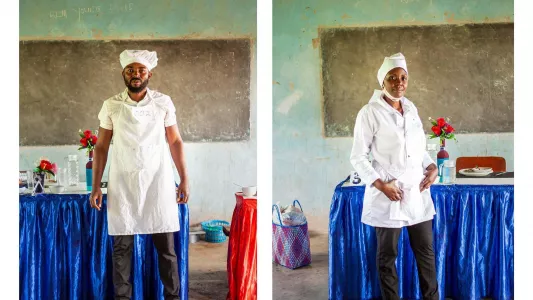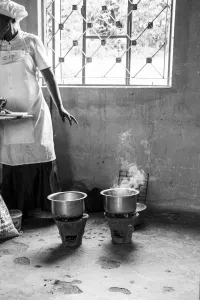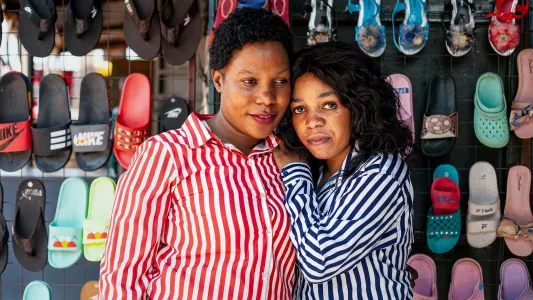© marajose silva vargas
The Journey of an Impact Evaluation Project by Mariajose Silva Vargas (@marijo.silva.vargas), is a project beautifully captured and delicately put together by a series of images. Photographs that have retained traditional practices as well as new, ones are being used to create a community, bonding locals and refugees together. They also show the progress of a journey refugees take when being part of an impact evaluation project, as well as the production of the project itself.
The images capture a research project that went through many phases over the years 2018-2022. In the planning phase they collaborated with the local refugee-led NGO in Kampala called Bondeko, established by Paul Kithima, a refugee from the Democratic Republic of Congo. Within the Bondeko, small projects are run by Ugandans like Elvis Zani, who provide special skills to be learnt by refugees, and for them to take part in the projects provided. These projects foster life skills that can essentially be used to help people see a way forward in areas such as urban farming, hairdressing, art crafts and producing briquettes. These skills would later be put towards helping people thrive in terms of creating a source of living or opening a business with the skills that had been learnt.

Later on the research team certified the skills of the refugee workers to provide them with a Ugandan skills certificate. Skills of local firms and refugees were matched up, in order to take part in a week-long internship. This was based on a common theme throughout the project which was sharing knowledge and skills, something that was emphasised as necessary by the leaders many times. This brought both locals and refugees together, to learn, share and become a part of the community.

This then gave hundreds of refugees the chance to begin their own individual journey in life planning after the Impact Evaluation Project. Researchers show the positive aftermath and effects of the project, using a successful story that features two women called Sifa and Mariam. Both women were bonded through the project when Sifa was matched with Mariam to work in her hair salon called Mama Prince. The two continued to work together after the internship had long ended and have maintained a close bond - just an example of the positive outcome the Impact Evaluation Project has for people, both locals and refugees.

The images that Mariajose Silva Vargas has captured are authentic and absorbing, they show perfectly how much work has gone into the Impact Evaluation Project, shining the spotlight on the people who have made it happen as well as showing the positive impacts it has had on people's lives long after the project had finished. The photos are colourful, raw and portray people the way they deserve to be portrayed: highlighting the power of human beings coming together to build and share, rather than doing the opposite which undoubtedly isn't doing humanity any favours. Perhaps the Impact Evaluation Project will help shine some light on certain areas of the world that need help in that area, especially when it comes to taking a direction to help people. A little light goes a long way.










